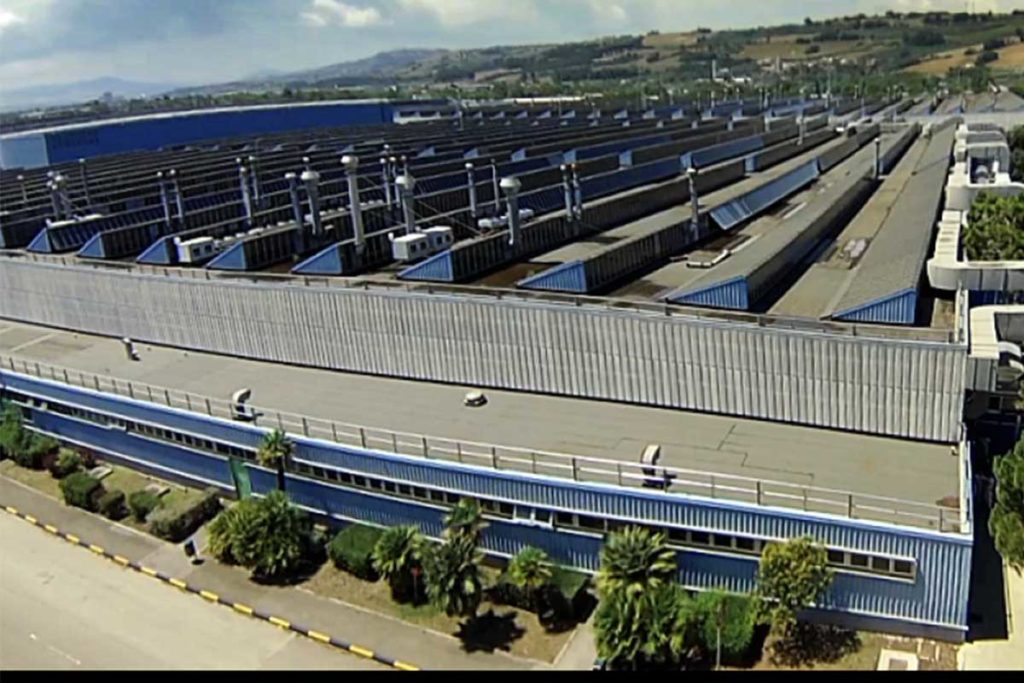
Italy's Stellantis plant in Termoli, famous for producing iconic combustion engines, is facing an unexpected transformation. Since its opening in 1972, it has specialized in the manufacture of engines such as, currently, the FIRE, the 2.0 GME 4-cylinder, the 2.9L V6 (and probably the 3.0L V6 Nettuno). The plant was destined to become a battery Giga-factory according to Stellantis' Dare Forward 2030 plan. But the situation took a surprising turn when, in the space of a few days, the Giga-factory project was halted, followed by the launch of the new Fiat 500 hybrid.
An uncertain future for Termoli
In March 2022, Stellantis announced a ambitious project to transform the Termoli plant into a battery Giga-factory. The press release stated that Stellantis, in collaboration with the Franco-German Automotive Cells Company (ACC) (in which the Group is the main shareholder), was planning to build a third battery production site at Termoli. With partners such as Mercedes-Benz and TotalEnergies/Saft, ACC was aiming for a production capacity of at least 120 gigawatt-hours (GWh) by 2030.
Carlos Tavares, CEO of Stellantis, emphasized that the importance of this investment for the future of the Termoli community. The transformation of the plant was intended to contribute to a more sustainable future, positioning ACC as the European leader in battery production and affirming Italy's role in this transition.
An unexpected break for Giga-factories
However, in early June, ACC has announced the suspension of construction of two of its Giga-factoriesincluding Termoli. The joint venture has decided to put these projects on hold due to falling demand for electric vehicles in Europe and high production costs. The Kaiserslautern site in Germany and the Termoli site in Italy, originally scheduled to start production in 2025 and 2026 respectively, have seen their timetables called into question.
This situation could have been catastrophic for Termoli, which found itself with declining internal combustion engine production and a cancelled battery Giga-factory. However, a new opportunity arose with the launch of the new Fiat 500 hybrid.
The Fiat 500 hybrid saves the day
The new Fiat 500 hybrid comes just in time to save the Termoli plant. The Polish FIAT Powertrain plant in Bielska, which has been producing Fire engines for the old Fiat 500 since 2007, will close at the end of 2024. The announcement that the new Fiat 500 hybrid will be produced in Italy, at the Mirafiori plant, means that thermal engine production in Termoli will continue until at least 2029.
This new direction provides a welcome respite for the Termoli plant, guaranteeing jobs and continued production. As Stellantis adjusts its strategies to respond to fluctuations in the electric vehicle market, the return to hybrid motor production for the Fiat 500 ensures temporary stability and continuity for the Italian plant.
While plans for a battery Giga-factory are on hold, the production of internal combustion engines for this iconic model is enabling Termoli to maintain its activity and continue to play a key role in the Italian automotive industry. The question is whether, Termoli won't be producing other combustion engines for other European models of the group, while the Puretech seemed to be becoming the predominant solution.
Let's not forget the Pandina, whose volumes will certainly be much higher than those of the 500 hybrid. Presumably, its engines will also be produced in Termoli, and not in South America as initially planned?
That may well be. It's all a question of timing. At the end of 2023, they announce the end of the engine plant in Poland. In February 2024 we hear about the Pandina. At the end of May, they announced a new 500 hybrid, and at the beginning of June, the Termoli battery gigafactory project was shut down. I think a lot of decisions have been made in the space of 6 months, and we may be in for more surprises between now and the end of the year. So even if it's not official, it's likely that the Pandina will have engines made in Termoli.
The best thing would certainly be to entrust Termoli with the design and manufacture of internal combustion engines for the group in Europe, and given the French company's record in terms of reliability, this would seem an obvious choice. It would also have a beneficial effect on Fiat and Alfa Romeo loyalists (and Italpassion readers), as would the production of a Giulietta in Melfi...
Very fair comment.
Absolutely right Fredo